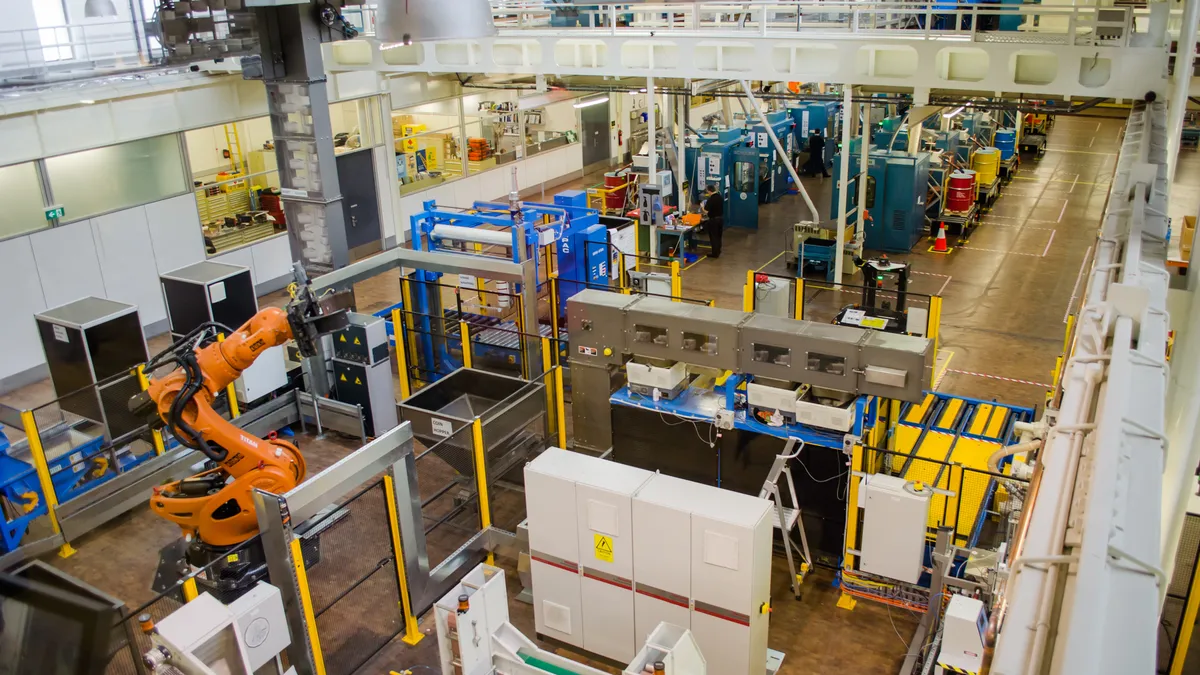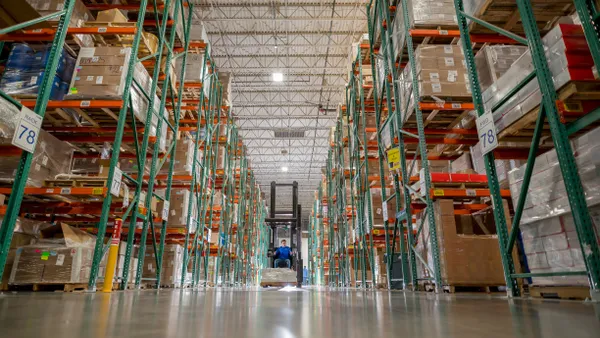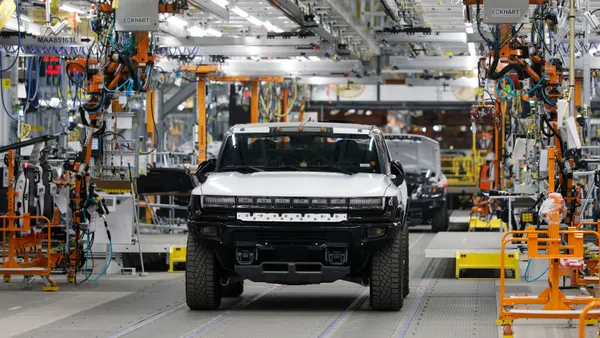Dive Brief:
- The average price of an Internet of Things (IoT) sensor has declined from $1.30 in 2004 to $0.44 in 2018, according to Microsoft's "2019 Manufacturing Trends" report.
- Microsoft expects there will be 36.13 billion connected IoT devices by 2021. (It should be noted that Microsoft would benefit financially from this as a result of hardware and cloud sales.)
- These IoT technologies will enable applications like predictive maintenance along with the ability to connect with supply chain management platforms to "intelligently route orders and automate work streams," Microsoft suggests in its report.
Dive Insight:
Forrester Research released a report last year predicting two areas — track-and-trace and inventory and supply chain management — would experience the largest spending growth on IoT between 2017 and 2023. The consultancy also expects businesses to dedicate spending to enabling new business models, including software or products-as-a-service. Those in the manufacturing space could take advantage thanks to cheaper IoT sensors, increased connectivity and new software platforms, the research company noted in a separate report released last month.
More specifically, IoT allows manufacturing operations to take advantage of the product-as-a-service model when it comes to the hardware in their facilities. Instead of paying full price for a piece of expensive equipment, a manufacturing operation can instead use a lease-like model to pay for a certain number of uses of that equipment as measured by IoT sensors.
Robotics-as-a-service models have employed this strategy as well, meaning warehouse operators or manufacturers no longer have to invest in the full price of a robot, but can instead pay a usage fee to the robotics provider. IoT technology could expand this business model beyond software and robotics to include other forms of expensive machinery.
IoT could also help with asset recovery. Forrester points out that the bins, tanks, drums, crates, racks and pallets used for shipping don't come cheap, and getting them back after use can be difficult. IoT devices paired with cellular and WiFi networks can provide visibility into a piece of equipment's location.
These sensors could also change how manufacturers communicate with spare parts suppliers as the promise of predictive maintenance emerges. A survey by PwC found 51% of the people using predictive maintenance were doing so to improve uptime.
As Forrester and Microsoft point out, IoT allows information technology to start communicating with operational technology. "Today, data-optimized smart machines can receive input from a wide range of sources — from customer order data to production data — to enable more agile manufacturing, improve production efficiency, and provide greater visibility into operational performance," Microsoft wrote in its report.
Still, some companies have struggled to move IoT projects into to full-scale production, with a survey by Mckinsey from earlier this year finding less than 30% of respondents had moved past a pilot phase.
Being one of the companies that's able to move beyond a pilot could depend on a number of variables including the right leadership and the right use cases for the technology, experts suggest. But as the price of IoT sensors continues to slide, finding the right use case will become cheaper for companies looking to experiment.
This story was first published in our weekly newsletter, Supply Chain Dive: Operations. Sign up here.














